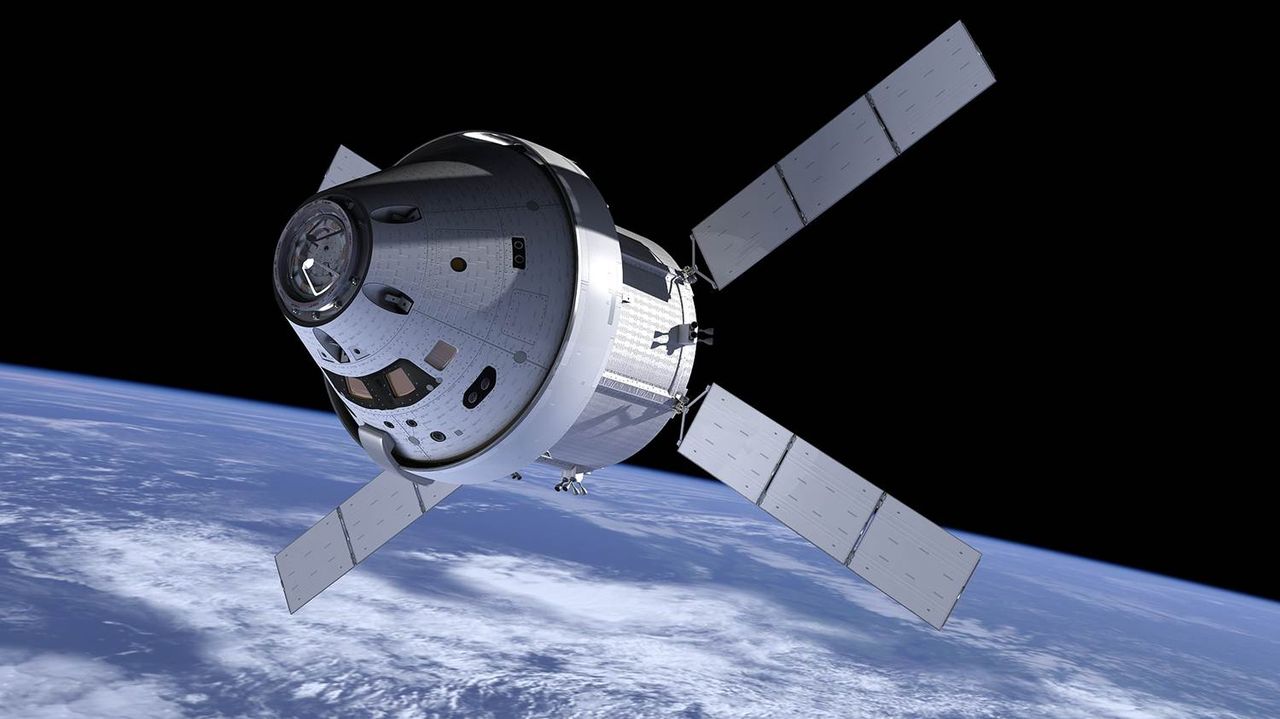 Assuming the weather cooperates, NASA is planning to do a test flight of its new deep space vehicle Orion on Dec. 4. The vehicle (that’s an artist’s conception above) will launch from Cape Canaveral aboard a Delta IV heavy rocket, and will reach an altitude of 5800 kilometres during a 4.5 hour flight that will involve two orbits of Earth before the craft splashes down in the Pacific Ocean.
Assuming the weather cooperates, NASA is planning to do a test flight of its new deep space vehicle Orion on Dec. 4. The vehicle (that’s an artist’s conception above) will launch from Cape Canaveral aboard a Delta IV heavy rocket, and will reach an altitude of 5800 kilometres during a 4.5 hour flight that will involve two orbits of Earth before the craft splashes down in the Pacific Ocean.
No astronauts will be aboard during the test flight. Instead, the craft will be auto-piloted. For comparison purposes, the International Space Station orbits Earth at 400 kilometres. So Orion will reach a much higher altitude, and during re-entry will be travelling at 20,000 k.p.h which will put a fair bit of stress on its heat shield (temps are expected to reach 2200 degrees C). The flight will test the heat shield, along with other operating systems.
Orion consists of a crew module and a service module. The former will provide living and work space for four astronauts, while the latter contains propulsion, power and life support. The craft is designed to support 21 days of active crew operations, and up to six months of static operation. That would occur once Orion had docked to a Deep Space Habitat. The DSH is still in the design phase, but it’s projected to be the size of the ISS, and will be used for missions of up to 500 days.
The first crewed mission aboard Orion isn’t expected to take place until 2021. In the future, the craft will be used in conjunction with the DSH to transport astronauts to the Moon, select asteroids, and ultimately Mars. There’s no time-line for any of that yet, but the test flight on Dec. 4 will be a key first step.
To learn more about the Orion mission visit NASA’s website.





